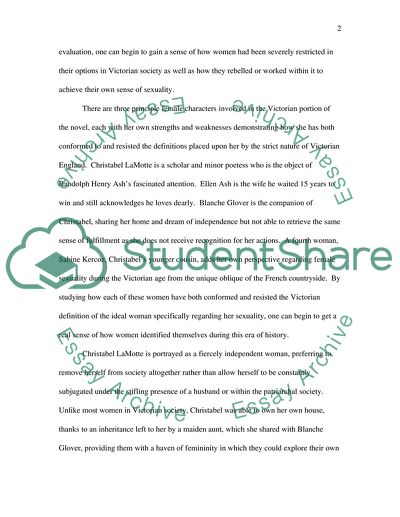Cite this document
(“The role of sexuality in Victorian society applied to A. S. Byatts Essay”, n.d.)
The role of sexuality in Victorian society applied to A. S. Byatts Essay. Retrieved from https://studentshare.org/miscellaneous/1536731-the-role-of-sexuality-in-victorian-society-applied-to-a-s-byatts-possession
The role of sexuality in Victorian society applied to A. S. Byatts Essay. Retrieved from https://studentshare.org/miscellaneous/1536731-the-role-of-sexuality-in-victorian-society-applied-to-a-s-byatts-possession
(The Role of Sexuality in Victorian Society Applied to A. S. Byatts Essay)
The Role of Sexuality in Victorian Society Applied to A. S. Byatts Essay. https://studentshare.org/miscellaneous/1536731-the-role-of-sexuality-in-victorian-society-applied-to-a-s-byatts-possession.
The Role of Sexuality in Victorian Society Applied to A. S. Byatts Essay. https://studentshare.org/miscellaneous/1536731-the-role-of-sexuality-in-victorian-society-applied-to-a-s-byatts-possession.
“The Role of Sexuality in Victorian Society Applied to A. S. Byatts Essay”, n.d. https://studentshare.org/miscellaneous/1536731-the-role-of-sexuality-in-victorian-society-applied-to-a-s-byatts-possession.


